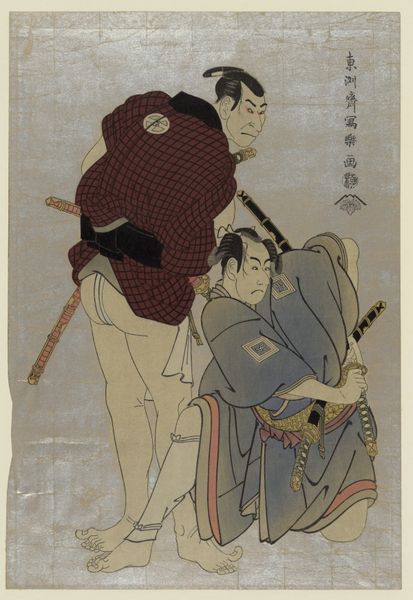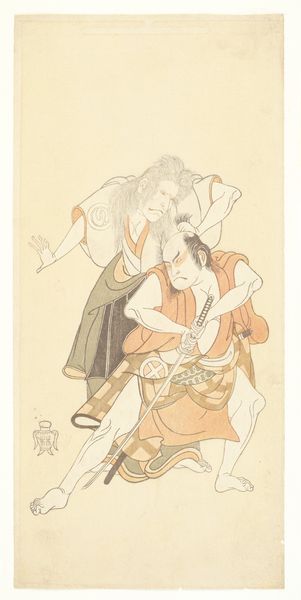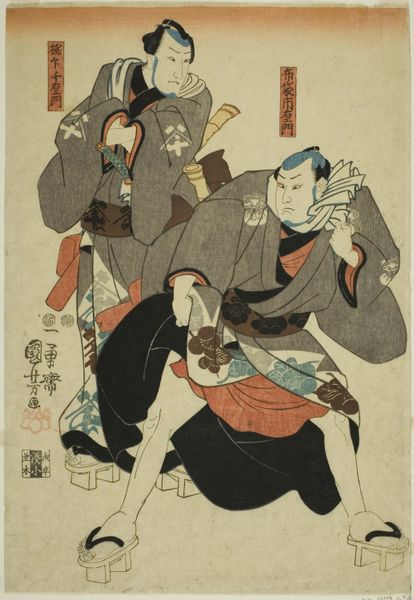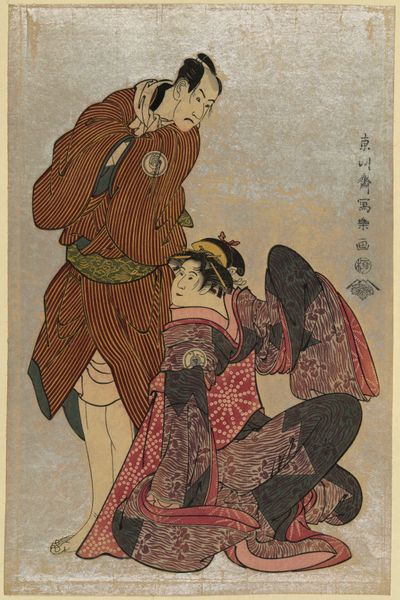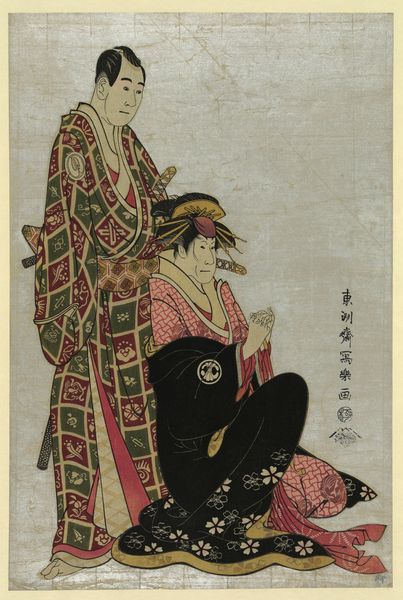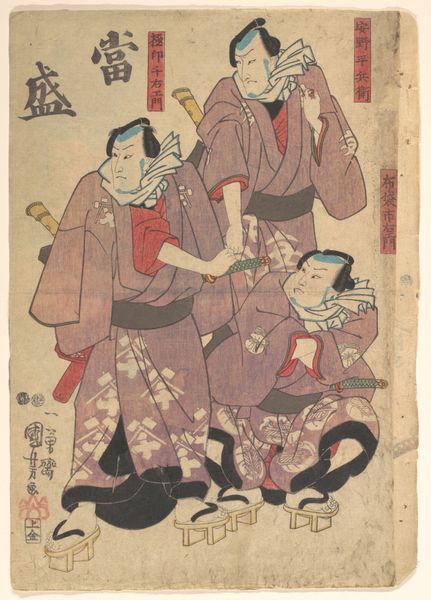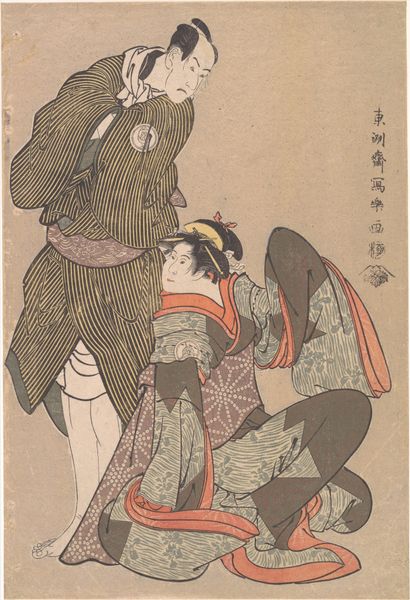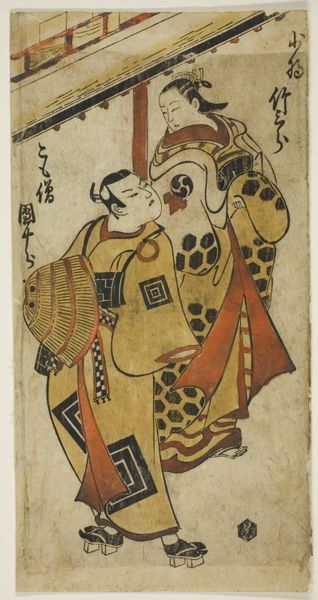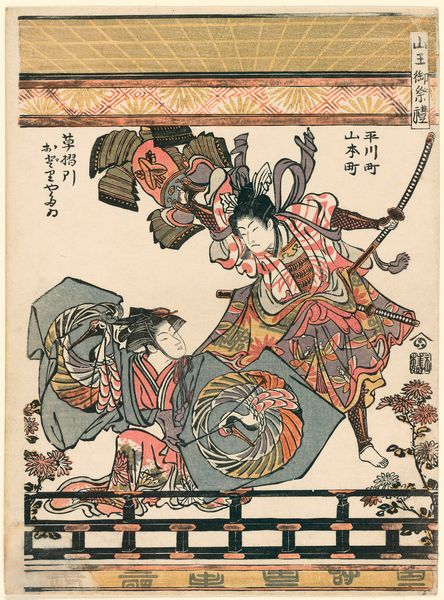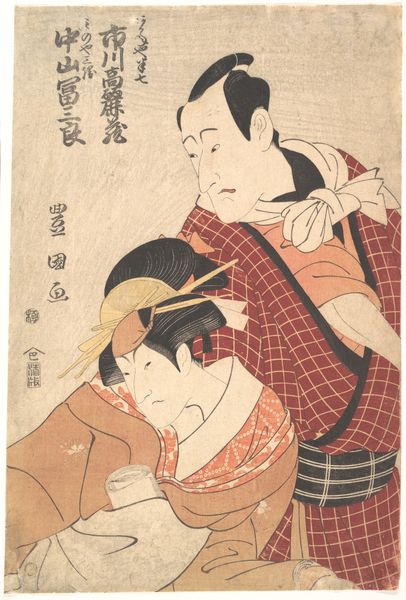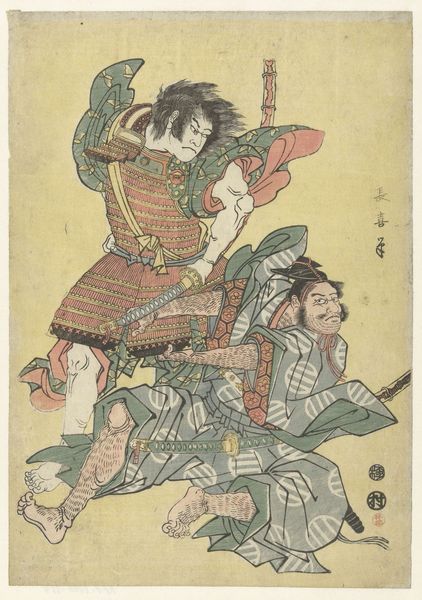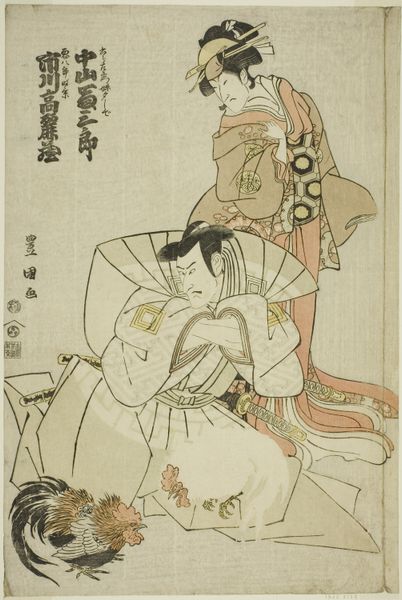
Kabuki Actors Arashi Ryūzō I as Yakko Ukiyo Matabei and Ōtani Hiroji III as Yakko Tosa No Matabei 1795
0:00
0:00
print, woodblock-print
#
portrait
# print
#
asian-art
#
ukiyo-e
#
figuration
#
flat colour
#
woodblock-print
#
history-painting
Copyright: Public domain
Curator: Before us, we see "Kabuki Actors Arashi Ryūzō I as Yakko Ukiyo Matabei and Ōtani Hiroji III as Yakko Tosa No Matabei," a striking woodblock print created around 1795 by Tōshūsai Sharaku. The work showcases two figures from the Kabuki theatre. Editor: My first impression is a sense of intensity—almost confrontational. The figures dominate the space. There’s an interesting contrast in the expressions, too, a somberness in the lower figure and a more quizzical look from the figure above. Curator: Indeed. Sharaku's portraits are renowned for capturing the psychological depth of Kabuki actors. During the Edo period, Kabuki was often policed, both artistically and socially. These were representations that played with public and private personas. It's intriguing how theatre became such an important element for public cultural rituals. Editor: Absolutely. The figures become allegorical characters on a bigger, more complicated societal stage. Consider, for example, how portraiture becomes an integral medium for disseminating not just aesthetics but a new mode for gender expression as well as broader ideas related to social performance. Curator: You’re spot on. It is important to note how the figures depicted are those of Yakko roles: servants or footmen in the Kabuki plays. We see through their positioning, costume, and expression Sharaku's interest in disrupting the genre through realistic if not heightened expression of these servants who become in his art stars. Editor: And that subversion is key, particularly thinking about the queer reading one can extrapolate from Sharaku's use of Kabuki performance, known at that time for the transgressive and erotic representations performed. What better space than theater to create those public figures in their own, subversive likenesses? Curator: His work diverges sharply from the idealized portrayals typical of the Ukiyo-e genre at the time, highlighting the human condition and breaking the mold in its presentation. We shouldn't forget that Sharaku's entire career lasted a brief ten months! Editor: That brevity almost adds to the mystique. His sharp focus and unflinching realism remain resonant. The print asks us to reflect on artifice and authenticity, then and now. It underscores, in a way, that questions around performance are never fixed but evolve to embody the culture within which they’re staged.
Comments
No comments
Be the first to comment and join the conversation on the ultimate creative platform.
